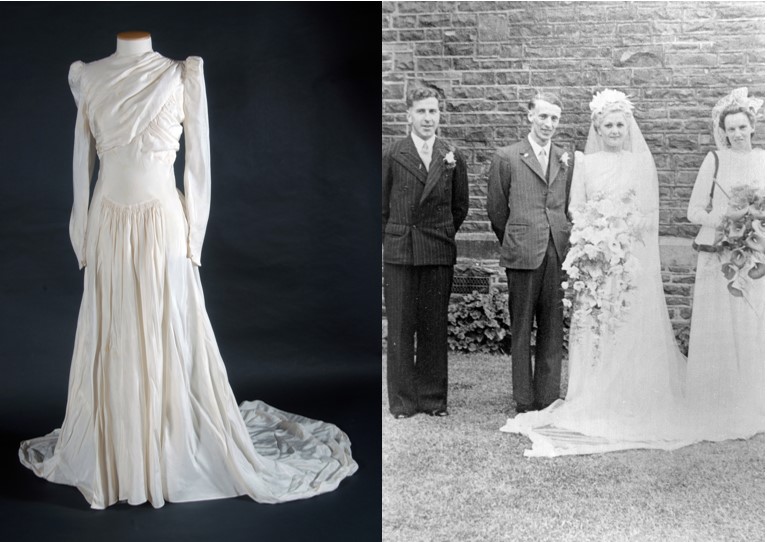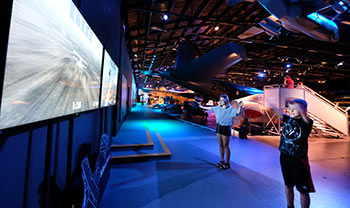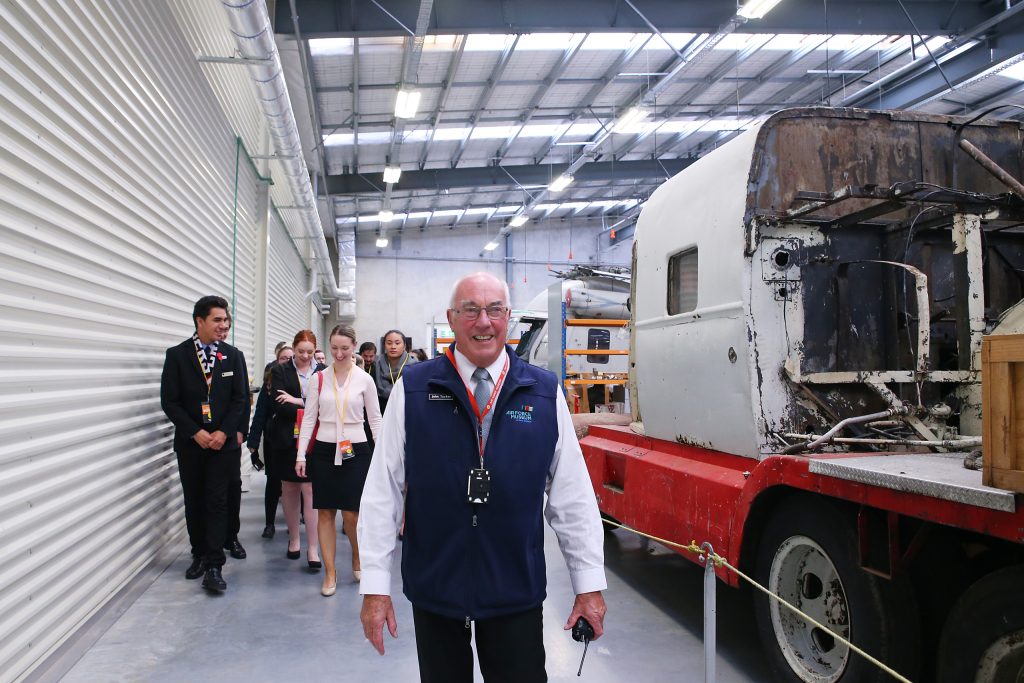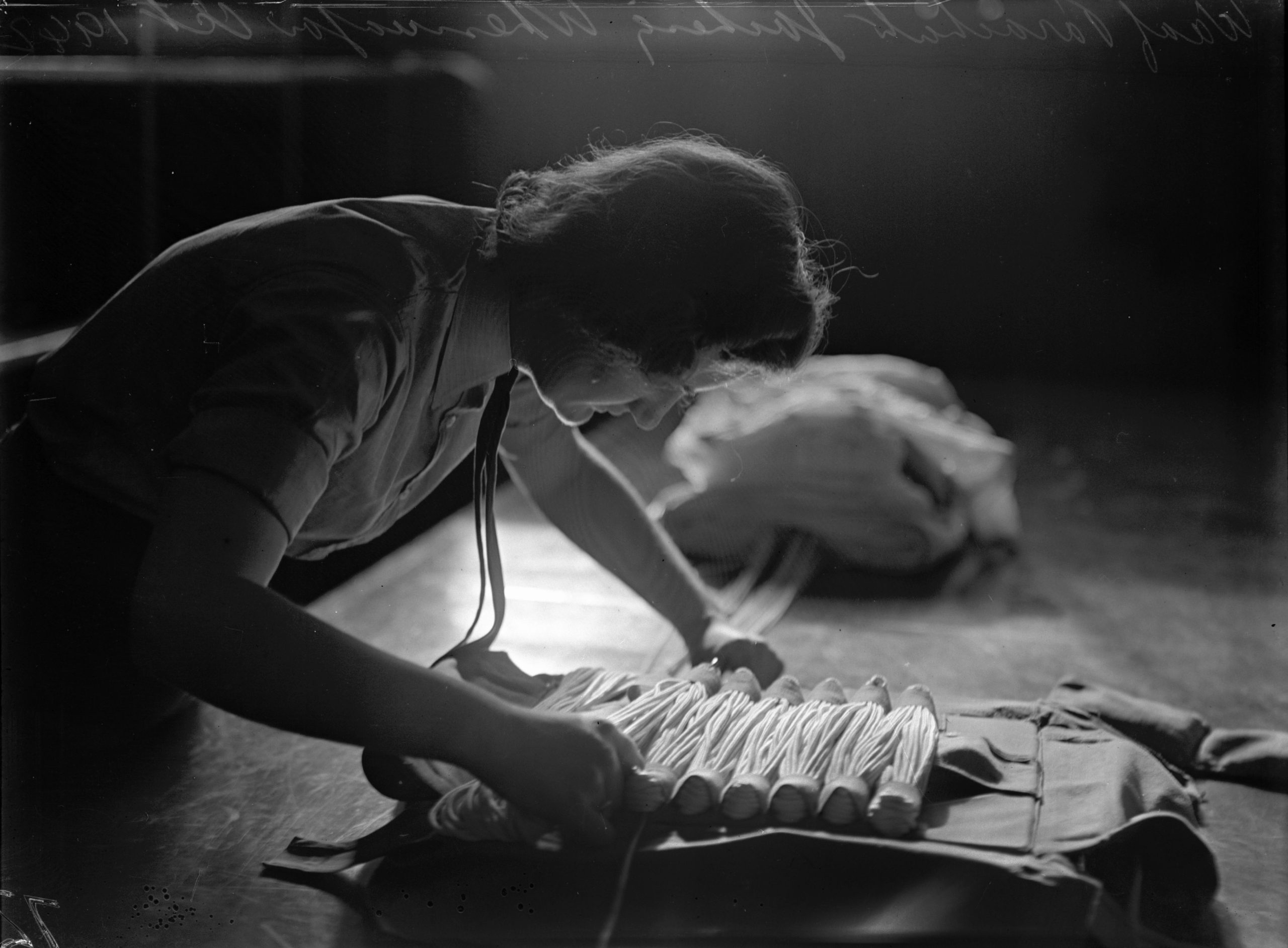When it comes to the parachutes in our collection, like so much of the Safety and Surface collection, they’ve been left a bit behind in the dust, so to speak. As such, they’re getting their revenge, and seem to spawn on the holding shelves of the lab I work in, like the Hydra of Greek myth — whenever I finish cataloguing and packing one, two more take its place between all the boxes and bags.
However, by this point in my project, I think I have finally perfected a method to deal with them quickly and efficiently, or at least I hope I have. Not counting the smaller drogue parachutes, three canopy fragments, and a mysterious length of silk rigging line, I’ve handled a total of 28 man and cargo parachutes.
That means I’ve had to haul nearly 30 parachutes out of whatever makeshift packaging they’d been stored in, search through the panels for an identifying label, and refold in a way that actually makes sense. Overall, it’s a bit of a mission. Thanks to the rigging lines, metal components, and metres worth of fabric in the canopy, parachutes are not exactly what one might describe as lightweight, nor particularly easy to wield. Unfolded, all that slippery fabric and coiling silk rope makes them distinctly unwieldy.

A WAAF parachute packer at work in Whenuapai, 1942. Image ref. PR72, RNZAF Official.
Parachutes are, of course, an essential item in the Air Force, and it’s hard to think of a time where people went to war in the skies without them, but it wasn’t until 1918 that they were more readily implemented in British aircraft. It was only after pilots with the Royal Air Force (RAF) saw their German counterparts escaping their damaged planes and made it clear they wanted that option as well.
There are conflicting arguments for why parachutes weren’t already an option for British aviators, but one is that a lack of parachutes would encourage pilots to land their damaged craft, rather than to bail out. Another is that providing parachutes might suggest the aircraft would fail, and therefore not having one would boost both morale and faith in the aircraft. More likely, it had something to do with early military parachutes being too heavy, and a lack of storage space for them in the small, lightweight planes of the time.

Bill Horgan and his parachute, believed to be at RNZAF Station Harewood. Image ref. 2016-201, Air Force Museum of New Zealand.
By the mid-1920s, parachutes were being ordered by the RAF for its air crews, and by the outbreak of war in 1939, had become considerably more common in the equipment of airmen. In our collection, we have parachutes dating from the 1930s, all the way through to more modern examples. World War Two-era parachutes will sometimes come to us incomplete, with canopies missing small areas, single panels, or sometimes arriving as mere fragments. In some cases, this is because before the switch to nylon, parachutes were made with white silk or rayon, and due to the scarcity and rationing of fabric at home, some women acquired parachutes from their future husbands, brothers, or other relatives to make their wedding dresses with.

Wedding dress of Winifred Smith made with silk from a D-Day parachute for her 1946 wedding (left) and as seen in a photo from the day (right). Image refs. 2002-075.1 and MUS020111, respectively, Air Force Museum of New Zealand.
This dress, for example, worn by Winifred Smith on her wedding day in 1946 to Neale Smith of Christchurch, was made with the silk of a parachute used in the D-Day Landings, and later deemed surplus after the War ended. Winifred had been a safety equipment worker during the War, and was then offered the parachute to make her wedding dress. She designed and cut the dress herself on the voyage from England to New Zealand, and upon her arrival, had a seamstress put it together, as at the time, it was considered bad luck for a woman to make her own wedding dress. Also seen here to the right is the dress Winifred designed for her bridesmaid.
Luckily my job doesn’t involve folding parachutes for deployment, trying to wrangle one on a sea-faring vessel, nor dressmaking, because I think I’d be in trouble if it did. Most of the time, my job looks much like that of Leading Aircraftman Blanchard below: surrounded by parachutes while staring intently into a quick release box to see what secrets it holds. Usually those secrets are just clumps of dirt and spider webs older than I am, but that’s okay — I think I’d rather be cleaning those out than fighting a sewing machine.

Leading Aircraftman Blanchard working in the parachute room in the Safety and Surface Section. RNZAF Station Ohakea. Image ref. OhG3884-55, RNZAF Official.







Thanks for the blog. For the next improvement in parachutes you should read Dan Poynter’s “The Parachute Manual’ which has a chapter about the evolution of the ejection seat with the parachute. It started when they realised with the aircraft speed it was too hard to climb out of the cockpit, so came the ejection seat, but once you were ejected, seat and all, you still had to unbuckle and climb out of the seat. They soon developed into a more automated sequence. I found it very interesting. … from an ex- Safety and Surface Tech who used to work with Barf